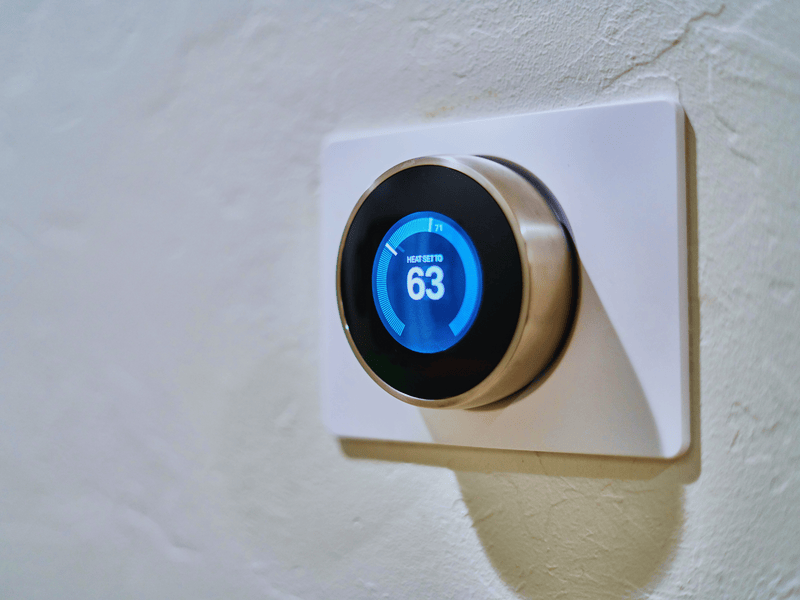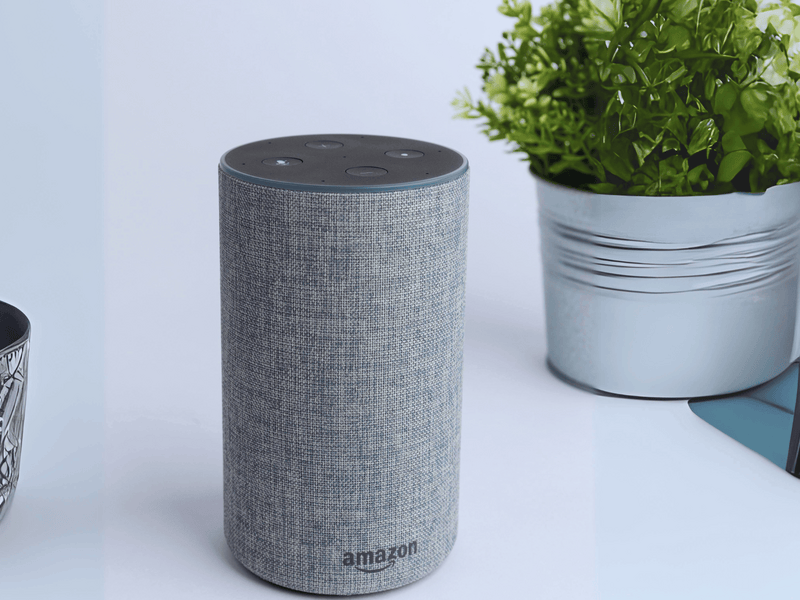Image Source: Unsplash
Introduction
As the summer heat peaks, finding ways to stay cool without breaking the bank becomes a top priority for homeowners. One solution that has gained significant popularity in recent years is the smart thermostat. With the ability to control your home’s temperature from the palm of your hand, even when you’re not at home, smart thermostats offer convenience and potential energy savings. But are they worth the investment? In this comprehensive guide, we’ll explore the benefits of smart thermostats, their impact on energy efficiency, and whether they can truly help you save on your energy bills.
Understanding Traditional Thermostats
Before diving into the world of smart thermostats, it’s essential to understand how traditional thermostats work. The standard thermostat found in most homes controls the heating and cooling system. By manually adjusting the temperature, homeowners can create a comfortable indoor environment. However, this process requires physically walking over to the thermostat and making changes.
Traditional thermostats rely on simple temperature adjustments to maintain desired comfort levels. When the temperature drops below the set point, the thermostat signals the heating system to kick in. Once the desired temperature is reached, the thermostat turns off the heating system to prevent overheating. The same process occurs with the air conditioning system, with the thermostat activating the cooling system when the temperature rises above the set point.
The Rise of Smart Thermostats
Smart thermostats, on the other hand, offer a significant upgrade to traditional thermostats. These devices integrate Wi-Fi connectivity and advanced features that go beyond basic temperature adjustments. With a smart thermostat, homeowners can control their heating and cooling systems remotely, taking advantage of various factors such as their daily schedule, occupancy patterns, and preferred temperature settings.
The ability to adjust the temperature from anywhere, at any time, is one of the primary advantages of smart thermostats. Whether you’re at work, on vacation, or simply lounging on the couch, you can use a smartphone app to control your thermostat and ensure your home is at the perfect temperature when you arrive.
Energy Efficiency and Cost Savings
One of the main reasons homeowners consider investing in smart thermostats is their potential for energy savings. Heating and cooling account for a significant portion of residential energy consumption, making climate control an essential factor in overall energy usage. Smart thermostats offer several features that can help optimize energy efficiency and reduce utility bills.
Automated Temperature Adjustments
Many smart thermostats are equipped with learning capabilities that adapt to your schedule and preferences. These devices learn your daily routines, occupancy patterns, and temperature preferences over time, automatically adjusting the temperature based on current needs. By avoiding unnecessary heating or cooling when no one is home, smart thermostats can help reduce energy waste and save on utility costs.
Energy Usage Insights
Smart thermostats provide valuable insights into your energy usage patterns. Through companion apps or online portals, you can access detailed reports on how much energy your HVAC system consumes. Some models even compare your energy usage to similar households in your area, providing benchmarks and suggestions for improvement. By gaining a better understanding of your energy consumption, you can make informed decisions and take steps to further optimize energy efficiency.
Remote Monitoring and Control
The ability to monitor and control your thermostat remotely is a significant advantage of smart thermostats. Whether you forgot to adjust the temperature before leaving home or want to make changes while away, you can use a smartphone app to remotely access your thermostat. This feature allows you to optimize energy usage by adjusting the temperature based on occupancy and weather conditions.
Energy-Saving Features
Smart thermostats often come equipped with additional energy-saving features. Some models provide reminders to change air filters regularly, ensuring that your HVAC system operates at peak efficiency. Others offer tips and recommendations for more energy-efficient choices, empowering homeowners to make informed decisions. These features help demystify temperature control and encourage energy-conscious behaviors.
The Cost of Smart Thermostats
While smart thermostats offer numerous benefits, it’s essential to consider their upfront cost. The price of smart thermostats varies depending on the brand, model, and features. Entry-level models can cost around $35, while high-end options can exceed $100. In addition to the device itself, there may be installation costs and the need for additional tools or materials.
Installation methods also impact the overall cost. Some smart thermostats come with easy-to-understand instructions and can be installed by homeowners or tech-savvy individuals. However, professional installation services are available for those who prefer expert assistance.
Calculating Potential Savings
Determining whether a smart thermostat is worth the investment requires considering the potential energy savings and the payback period. The amount of money you can save with a smart thermostat depends on various factors, including your existing energy usage habits and local utility rates.
According to the Environmental Protection Agency (EPA), Energy Star-certified smart thermostats can save users an average of 8% on their utility bills. For some homeowners, this translates to annual savings of around $50. However, the actual savings can vary based on individual circumstances. Homes located in regions with extreme weather conditions or high energy prices may experience greater savings.
It’s important to note that homeowners who have already implemented energy-saving practices, such as manually adjusting their thermostat and optimizing their heating and cooling schedules, may not see a significant difference in energy savings with a smart thermostat. However, for those who are less meticulous in their energy-saving efforts, a smart thermostat can help optimize energy usage and potentially cover its own cost within the first year or two.
Factors to Consider
Before deciding whether a smart thermostat is worth the investment, it’s crucial to consider several factors.
Climate
The climate in which you live plays a significant role in the potential energy savings offered by a smart thermostat. Extreme weather conditions, such as very hot summers or cold winters, can lead to higher heating and cooling costs. In these regions, the energy-saving features of a smart thermostat can have a more significant impact on reducing utility bills.
Occupancy Patterns
Understanding your home’s occupancy patterns is crucial when considering a smart thermostat. If you have a predictable daily routine and spend long periods away from home, a smart thermostat can optimize energy usage by adjusting the temperature when no one is present. However, if your home is occupied most of the time, the energy-saving benefits may be less pronounced.
Existing Energy-Saving Measures
If you have already implemented energy-saving measures, such as proper insulation, sealing air leaks, and efficient HVAC systems, the additional savings offered by a smart thermostat may be minimal. However, the convenience and remote control capabilities of a smart thermostat can still provide added benefits, even if the energy savings are not substantial.
Compatibility with Your HVAC System
Before purchasing a smart thermostat, it’s essential to ensure compatibility with your existing HVAC system. Not all smart thermostats are compatible with all heating and cooling systems. Checking compatibility requirements and consulting with a professional HVAC technician can help you avoid compatibility issues and ensure a seamless integration.
Best Practices for Maximizing Energy Savings
To maximize the energy-saving potential of a smart thermostat, consider implementing the following best practices:
Set Appropriate Temperatures
Setting appropriate temperature levels can significantly impact energy consumption. During warmer months, aim for a temperature setting that balances comfort and energy efficiency. Raising the temperature by a few degrees can lead to substantial savings. In colder months, lower the temperature when no one is home or during nighttime hours. Finding the right balance ensures comfort while minimizing unnecessary energy usage.
Utilize Scheduling Features
Take advantage of the scheduling features offered by smart thermostats. Program your thermostat to adjust the temperature based on your daily routine and occupancy patterns. This allows your HVAC system to operate more efficiently, reducing energy waste. Experiment with different schedules to find the optimal settings for your lifestyle.
Leverage Remote Control
Use the remote control capabilities of your smart thermostat to your advantage. If you forgot to adjust the temperature before leaving home, you can make changes remotely through a smartphone app. This feature ensures that your home is at a comfortable temperature when you arrive while avoiding unnecessary energy consumption during your absence.
Monitor and Analyze Energy Usage
Regularly monitor and analyze your energy usage through the companion app or online portal provided by your smart thermostat. Pay attention to energy usage patterns and identify areas where energy consumption can be further optimized. By gaining insights into your usage habits, you can make informed decisions and adjust settings accordingly.
Take Advantage of Additional Features
Explore the additional features offered by your smart thermostat. Some models provide air filter change reminders, ensuring that your HVAC system operates efficiently. Others offer energy-saving tips and recommendations based on your usage patterns. Embrace these features to maximize the energy-saving potential of your smart thermostat.
Conclusion
In conclusion, smart thermostats offer numerous benefits for homeowners seeking to optimize energy efficiency in their smart homes. While the upfront cost may vary, the potential energy savings and convenience make them a worthwhile investment for many. By automating temperature adjustments, providing energy usage insights, and enabling remote control capabilities, smart thermostats empower homeowners to reduce energy waste and save on utility bills. However, it’s essential to consider factors such as climate, occupancy patterns, existing energy-saving measures, and compatibility with your HVAC system before making a decision. By following best practices and leveraging the features of your smart thermostat, you can maximize energy savings and create a more comfortable and efficient home environment.
Remember, a smart thermostat is just one piece of the energy efficiency puzzle. Exploring other smart home technologies and adopting energy-conscious behaviors can further enhance your efforts to create a sustainable and cost-effective living space.
Note: This article is for informational purposes only. Please consult with a professional before making any significant changes to your home’s HVAC system or energy usage practices.




